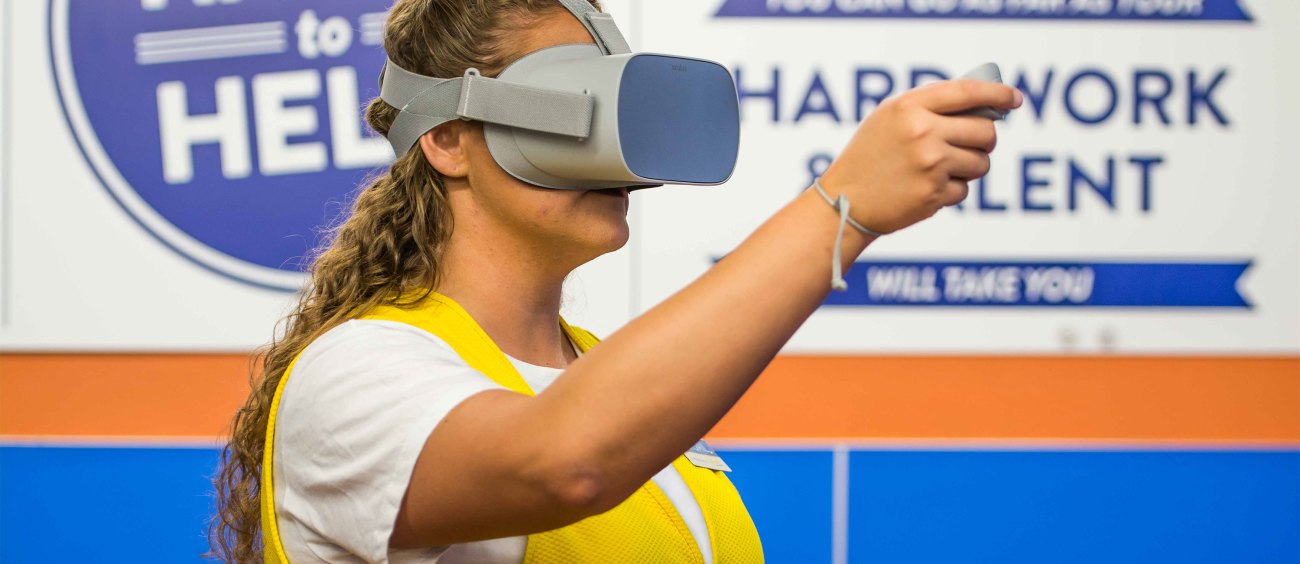What is VR Training?
Virtual Reality (VR) involves creating an entirely virtual 3D environment for you to explore while wearing a VR headset. Virtual reality-based training creates immersive simulations for on-the-job style employee training in a safe, controlled and consequence-free environment. Trainees can practise the necessary skills and familiarise themselves with potential scenarios that they will be expected to handle while on the job.
Better Retention Rates
Experiential learning or ‘learning by doing’ is a more impactful way of retaining the information learned during a lesson than traditional methods. This is due to the fact that the user has acted out the steps needed to complete the task in the virtual world. With traditional methods, the trainee is trying to recall information from visual or verbal instructions. Now, the trainee is simply repeating a process that they have done many times before.
The immersive qualities of VR training simulations also lead to better retention rates by making the lesson more engaging. A recent study by the University of Maryland found that: “40% of the participants scored at least 10% higher in recall ability using VR over the desktop display”. “The results showed an 8.8% improvement overall in recall accuracy using the VR headsets”.
VR helps create a more realistic experience by building a re-creation of the environment that the trainee will be expected to complete the task in the future. Whether that will be an emergency room operating table, manufacturing plant floor or mechanics’ garage. By making the virtual experience close to the real-life scenario, the trainee will have a sense of familiarity when the time comes to put their training to the test in the real world.
More Access & Remote Learning
VR has the capabilities to provide ‘hands-on’ learning remotely and on a large scale. This means that employees can learn important job skills no matter where they are. The increasing affordability of headsets and training platforms now means that VR training is more accessible than ever before.
Walmart Case Study
Walmart is one example of a company that has successfully introduced VR training on a large scale for their employees. Walmart has over 1 million employees who work across nearly 5000 stores across the U.S.

Finding the time and resources to properly train their workforce was proving to be a challenge. In response to this, they distributed more than 17,000 Oculus Go headsets with VR training modules across their stores. Now every associate – including those on the floor who interact with customers the most – will have access to the same training that their managers and department managers do at the Academies. Walmart uses VR to train associates in three main areas: new technology, soft skills like empathy and customer service, and compliance.
Walmart saw employee engagement and training retention rates improve after launching the initiative in 2018. “We had associates standing in line to get trained, that never normally happens. So we knew we had something,” said Brock McKeel, senior director of digital operations at Walmart. McKeel continued; “Life happens in 360, not 2D video”. “We test our associates on the content they see. Those associates who used VR as part of their training scored higher than those who didn’t.”
“The great thing about VR is its ability to make learning experiential,” said Andy Trainor, Walmart’s senior director of Walmart U.S. Academies. “When you watch a module through the headset, your brain feels like you actually experienced a situation. We’ve also seen that VR training boosts confidence and retention while improving test scores 10 to 15 per cent – even those associates who simply watched others experience the training saw the same retention boosts.”
